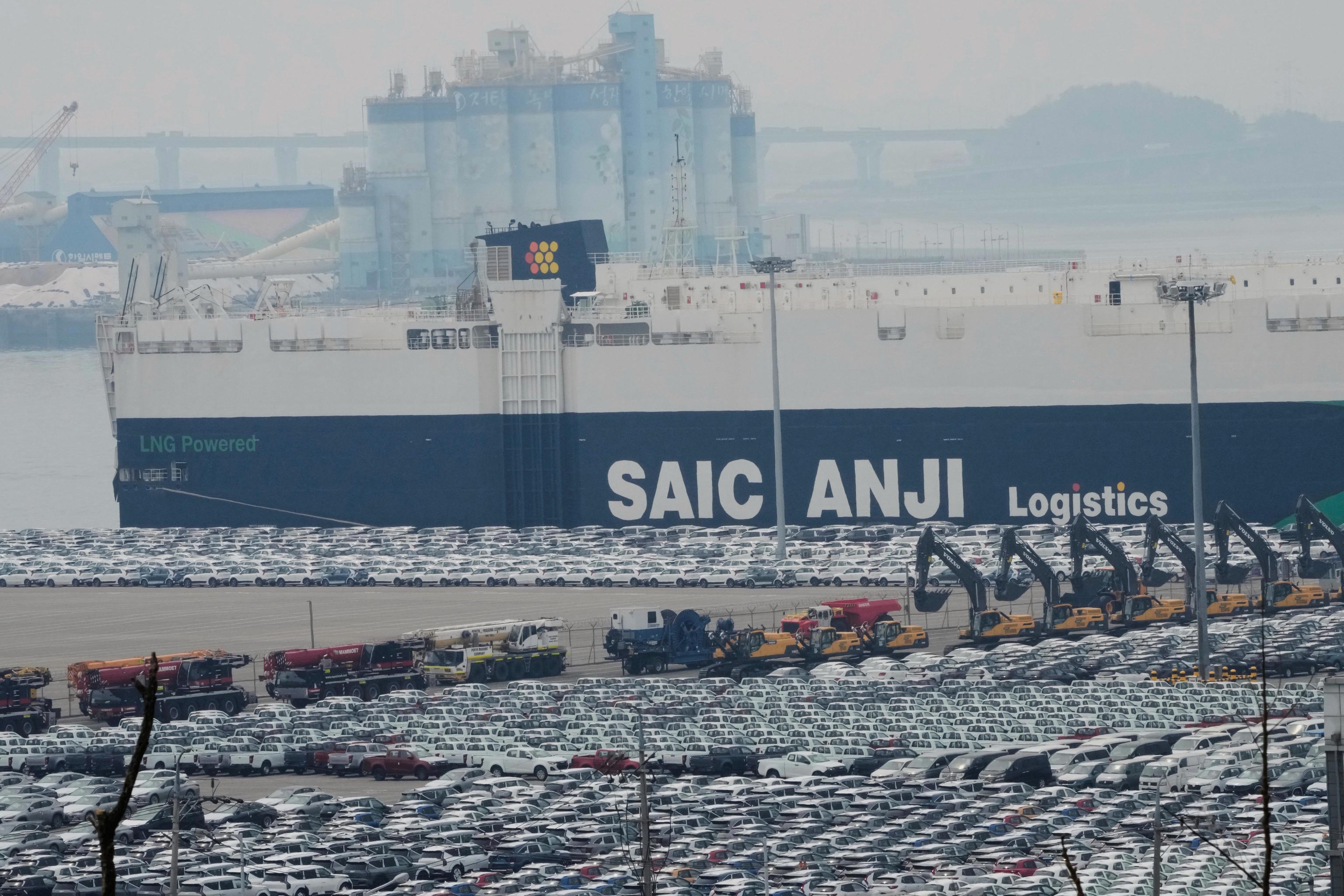The trade war has begun. Trump has unleashed, on his 'Day of Liberation,' a storm of tariffs against partners and non-partners, against the entire planet. Every country trading with the United States will pay at least a 10% universal tariff, which increases to 34% for China and 20% for the European Union (EU).
The US president expects these new import tariffs to bring hundreds of billions of dollars annually to the federal government. However, the reality is that an atmosphere of uncertainty, already impacting markets and stock exchanges worldwide, has settled in all economic sectors. This is what we know about Trump's tariffs:
What tariffs has Trump announced?
Starting on Saturday, April 5 at 04:01 GMT, all products entering the United States will be subject to an additional customs tariff of 10% (to be precise, 10 percentage points), according to the presidential decree.
A few days later, on April 9 at the same time, selective surcharges are applied to dozens of countries, based on calculations made by US government teams: 34% for China, 20% for the European Union, 46% for Vietnam, 24% for Japan, 26% for India, 31% for Switzerland, 25% for South Korea, and 25% for Taiwan, to India.
Even more serious is that all these customs duties are added to existing levies before Trump's return to the White House in January.
China, one of the world's largest exporters, will face a hefty bill. According to the White House, the 34% is added to the 20% already applied since Trump's inauguration, totaling 54%.
The head of state also signed a decree on Wednesday canceling the exemption of customs duties for small packages sent from China, a mechanism that has allowed e-commerce giants like Shein and Temu to expand in the United States.
Which products and countries are exempt from the new tariffs?
Some goods such as copper, pharmaceutical products, semiconductors, wood, gold, energy, and "certain minerals" are not subject to the tariffs announced on Wednesday, according to a note from the White House.
The United States' neighbors, Canada and Mexico, united by the United States-Mexico-Canada Agreement (USMCA), are not on the list. They are subject to a special regime involving tariffs of 25% (10% for Canadian hydrocarbons) except for products covered in the trade agreement.
Other countries like Belarus, Cuba, North Korea, or Russia are also not on the list because they are subject to sanctions and have insignificant commercial relations.
How has the US calculated the new tariffs?
Many economists already criticize the method used by the Trump Administration to calculate the new tariffs as absurd. Although they have tried to disguise it with mathematical formulas, what Trump's team has done is simply calculate the US trade deficit with a specific country or bloc. The resulting figure is then divided by the total of US imports.
But to make the result even more severe, the government only considers goods, not services, which are a decisive factor in any balance but in most cases show the opposite sign, as the United States is an exporting power of services.
Pablo R. Suanzes, EL MUNDO's correspondent in Washington, explains this perfectly in this information.
In Spain, primary sectors like agriculture will be heavily impacted by these tariffs. Especially products like olive oil or wine, with significant revenue volume to the United States, will be greatly affected by the new levies.
Regarding the automotive sector, the general director of the Spanish Association of Automobile and Truck Manufacturers (Anfac), José López-Tafall, has indicated that the United States is not one of Spain's "critical markets," so the impact on Spanish factories will be "very limited." In this regard, there were no vehicle exports to the United States in 2024.
However, the Spanish Association of Automotive Suppliers (Sernauto) has highlighted that tariffs on certain components will structurally impact the transatlantic supply chain. The levies will affect both direct exports from Spain and cars produced in Germany, France, or Mexico but incorporating Spanish components in their design.
How have the stock markets reacted to the new tariffs?
The Spanish stock market opened with a 1.52% decline, affected, like other markets worldwide, by the consequences of the trade war initiated by Trump. At the market opening, the IBEX 35 lost 202.7 points, 1.52%, and stood at 13,140.5 points, leading the index to reduce its gains for the year to 13.33%.
The most affected values in the Spanish market are banks and ArcelorMittal. The biggest declines are for CaixaBank, at 4.07%; followed by Santander, at 3.68%; and ArcelorMittal, at 3.04%.
In the rest of Europe, in early trading, the Paris Stock Exchange was down 1.79%; Frankfurt, 2.08%; Milan, 1.58%; Amsterdam, 1.44%; and London, 1.07%.
On the other hand, major Asian markets have opened with significant losses following Trump's 'Day of Liberation,' with a 3% drop in the Tokyo Stock Exchange and around 1.5% in the Shanghai (China) and Hong Kong stock exchanges. Southeast Asian markets opened and remain in the red, with Vietnam recording the worst declines.
How will the most fragile economies be affected?
From the South Atlantic islands to the heart of Southeast Asia, a group of countries and territories as diverse as Lesotho, Saint Pierre and Miquelon, Syria, Iraq, Madagascar, Myanmar, Sri Lanka, Laos, Cambodia, Vietnam, and the Falkland Islands are the most affected by Trump's imposition of "reciprocal tariffs."
The new tariffs will hit economies already marked by fragile structures, dependent on natural resources, with limited productive diversification, high labor informality, and modest per capita incomes.
With limited infrastructure and strong exposure to political crises, conflicts, or geographical isolation, these countries and territories concentrate their exports in primary sectors such as agriculture, fishing, mining, or textiles, which now face new obstacles to enter the US market.
In almost all cases, exports are dominated by basic products with little added value. Madagascar is a world leader in vanilla production, while Myanmar and Cambodia heavily rely on the textile sector. Lesotho, completely surrounded by South Africa, mainly exports clothing and diamonds.
